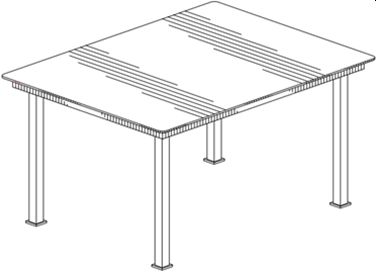In the world of industrial design, protection rules differ dramatically across jurisdictions, and Canada is no exception. While Canada and the United States often draw comparisons in various legal and business contexts, their approaches to industrial design protection are strikingly different. One particularly unique aspect of Canadian industrial design law is the use of a written "Statement of Limitation" that allows proprietors to disclaim certain features of their design that are otherwise depicted in solid lines within the design drawings. This may enable use of the same drawing set as in other jurisdictions while procuring a broader scope of industrial design protection in Canada, if so desired.
The Power of the Statement of Limitation
In Canada, the Statement of Limitation is a powerful tool for those seeking to protect specific aspects of their designs. This statement allows the applicant to clarify which parts of the design they wish to protect and which parts they do not. This can be particularly useful in cases where a proprietor generally envisions variations of a design but either has not finalized such variations (as to have illustrative drawings of them) or does not have interest in commercializing such designs. Additionally, the Statement of Limitation can be particularly useful to disclaim portions of an article having distinct, well-known parts which are not the subject of the design, that is, the design proprietor has not contributed anything novel to the appearance of those parts.
For instance, a Statement of Limitation may broadly state that entire elements of the finished article are not claimed. However, more commonly, the statement is used to disclaim select three-dimensional (3D) or two-dimensional (2D) features that are shown in solid lines in the drawings. This selective approach can help in focusing the design protection on what is truly novel and original about the design.
Understanding Design Features
When discussing industrial design in Canada, it's essential to understand what design features can be protected. According to the Canadian Industrial Design Office Practice Manual (IDOP), these features include:
- Shape: The external form or outline of the finished article.
- Configuration: The arrangement of parts that make up the finished article.
- Pattern: Repeating decorative elements that are identical.
- Ornament: Any other decorative elements placed on the surface of the finished article.
These features can be protected individually or in combination, depending on the novelty of the design. If no Statement of Limitation is included in the application, then the scope of protection is deemed to be directed to all these design features (in combination with each other).
Example: The Table
Let's illustrate this with an example from the IDOP. Imagine a design application for a table, pictured below. The table has a unique tabletop design, specifically in overall 3D shape, but the legs are standard and not of particular interest to the proprietor. Furthermore, although the tabletop is shown without ornamentation, the proprietor would like to ensure that the scope of design protection is not limited to the absence of ornamentation. In this case, the proprietor could include a Statement of Limitation that says:
"The design is limited to the features of shape and configuration applied to the Table. The legs do not form part of the design."

By including this statement, the proprietor clarifies that they are only seeking protection for the unique 3D aspects of the tabletop and not the entire table, which might otherwise include the legs.
It will be appreciated that using the Statement of Limitation to disclaim entire elements of an article is particularly useful for well-known articles with well-defined elements or parts, such as a Table. In more complex cases, showing disclaimed elements in broken line would be more effective, not only to ensure the desired scope of protection is obtained, but also to reduce likelihood of objection from an Examiner.
Strategic Considerations for Filing
The Statement of Limitation is a strategic consideration that should be carefully evaluated at the time of filing. Proprietors need to think about whether the novelty of their design relates to its 3D shape, 2D features, or a combination of both. If the novelty lies only in a portion of what is shown in the drawings, a Statement of Limitation is an invaluable tool to broaden the scope of protection.
In conclusion, the Statement of Limitation is a unique feature of Canadian industrial design law that offers proprietors flexibility and precision in defining what aspects of their design they wish to protect. By understanding and effectively utilizing this tool, proprietors can better safeguard their unique designs in a highly competitive market.
The content of this article is intended to provide a general guide to the subject matter. Specialist advice should be sought about your specific circumstances.


